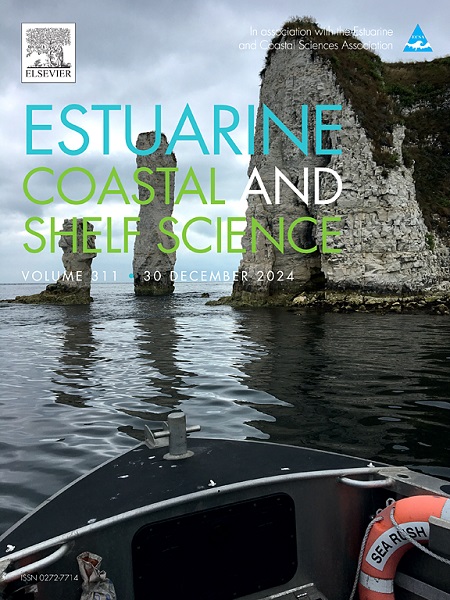Can we accurately extract ocean tides from satellite altimeter records with substantial missing values in shallow bays?
IF 2.6
3区 地球科学
Q1 MARINE & FRESHWATER BIOLOGY
引用次数: 0
Abstract
Tidal dynamics in coastal areas remain poorly understood, primarily due to the complexity of local topography and the scarcity of observational data. Although satellite altimeters have proven to be a powerful tool for providing comprehensive and accurate sea level observations across the global ocean, their effectiveness is highly limited in coastal regions due to land interference. Classical harmonic analysis (CHA) model employs ordinary least square (OLS) to estimate tidal parameters from coastal satellite altimeter records, suffering from the problem of over-fitting when the number of unknown tidal parameters is comparable to or more than the number of valid observations. In this paper, two regularization methods (i.e. ridge and Lasso regression) are utilized to replace OLS in the CHA model to address the issue of over-fitting and the interleaved Topex/Poseidon-Jason1 series is analyzed with substantial missing values in Liaodong Bay, China. Practical experiments unequivocally demonstrate the superiority of Lasso regression to ridge regression and OLS. The spatially-averaged errors of OLS, ridge regression and Lasso regression are 5.43 cm, 3.99 cm and 2.84 cm, respectively. Moreover, tidal parameters obtained by OLS display significant unnatural spatial discontinuities along the satellite track, which are substantially diminished by Lasso regression. It is noteworthy that tidal constituents with small amplitudes obtained by Lasso regression may be unreliable due to residual over-fitting. Overall, CHA with Lasso regression is a method that can be widely applied to analyze various types of sea level records with substantial missing values in shallow bays.
我们能否准确地从卫星高度计记录中提取浅海湾中大量缺失值的海潮?
沿海地区的潮汐动力学仍然知之甚少,主要是由于当地地形的复杂性和观测数据的缺乏。虽然卫星高度计已被证明是提供全球海洋全面和准确的海平面观测的有力工具,但由于陆地干扰,其有效性在沿海地区受到高度限制。经典调和分析(CHA)模型采用普通最小二乘法(OLS)从沿海卫星高度计记录中估计潮汐参数,当未知潮汐参数的数量与有效观测数量相当或大于有效观测数量时,存在过拟合问题。本文利用岭回归和Lasso回归两种正则化方法代替CHA模型中的OLS,解决了过拟合问题,并对中国辽东湾交错Topex/Poseidon-Jason1序列进行了大量缺失值分析。实际实验明确地证明了Lasso回归相对于岭回归和OLS的优越性。OLS、ridge回归和Lasso回归的空间平均误差分别为5.43 cm、3.99 cm和2.84 cm。此外,OLS获得的潮汐参数沿卫星轨迹显示出明显的非自然空间不连续,Lasso回归大大减小了这种空间不连续。值得注意的是,Lasso回归得到的振幅较小的潮汐成分可能由于残差过拟合而不可靠。总的来说,CHA与Lasso回归是一种可以广泛应用于分析浅海湾中各种类型的大量缺失值的海平面记录的方法。
本文章由计算机程序翻译,如有差异,请以英文原文为准。
求助全文
约1分钟内获得全文
求助全文
来源期刊
CiteScore
5.60
自引率
7.10%
发文量
374
审稿时长
9 months
期刊介绍:
Estuarine, Coastal and Shelf Science is an international multidisciplinary journal devoted to the analysis of saline water phenomena ranging from the outer edge of the continental shelf to the upper limits of the tidal zone. The journal provides a unique forum, unifying the multidisciplinary approaches to the study of the oceanography of estuaries, coastal zones, and continental shelf seas. It features original research papers, review papers and short communications treating such disciplines as zoology, botany, geology, sedimentology, physical oceanography.

 求助内容:
求助内容: 应助结果提醒方式:
应助结果提醒方式:


